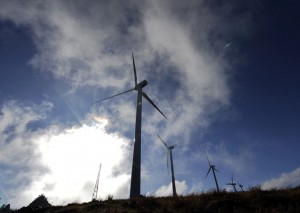
South African environmentalists have grown increasingly frustrated of late: while the government is full of bold plans for renewable energy, it has been slow to bring about real growth in the sector. So they will be cautious in their approval of Monday’s announcement that the government will start a long-awaited subsidy scheme in the first quarter of next year, in the hope of unleashing a wave of green electricity investment.
The cause is more urgent now than ever. For one thing, it has become a key part of the government’s fight against unemployment – the state wants to create 300,000 jobs in the “green economy” in the next decade.
But it is also needed to avert a repeat of the electricity crisis that swept the country three years ago. Eskom, the state electricity company, is racing against time to build enough capacity to keep up with the economy as it recovers from last year’s recession, and is pressing ahead with two 4,800MW coal-fired power stations.
If the lights are to stay on – and if South Africa is to meet its ambitious targets on carbon emissions – then renewables will also have to play a role, but Eskom’s expertise in the area is limited.
So bringing independent power producers into the game is imperative. There has been no shortage of interest: companies including Vestas, the Danish wind energy business, China’s Suntech, the leading solar energy company, and India’s Suzlon have established offices in the country.
The renewable energy feed-in tariff (Refit) system, set up early last year, was meant to provide a framework under which companies could sell power to the national grid, but has yet to lead to a single deal. Having received 384 applications from power companies, the government will release “procurement documentation” in the first quarter of next year, says Ompi Aphane, acting deputy director-general at the department of energy.
The reasons for the delay are not clear, says Ralph Berold, an energy analyst at Quartile Capital. “It could be a lack of capacity in the department, legal issues around its role, or the funding of the Refit programme,” he says.
Eventually, the government hopes to see green power generation of 24,000MW – about two-thirds of the country’s entire current capacity. In the medium term, it wants a more modest 16 per cent of electricity to come from renewables.
That target is more than feasible, Berold says; Germany, for example, is aiming for more than double that proportion. But big changes are needed – not least the establishment of an independent power purchaser, to end the current set-up whereby private producers must rely on Eskom to buy their electricity.
“Eskom has expressed the need to sign up independent producers, but it’s not really geared to think about a liberalised power market,” he says. “And there’s no real urgency from the government’s side. Renewables are desperately needed, but they’ve been dragging their heels.”










